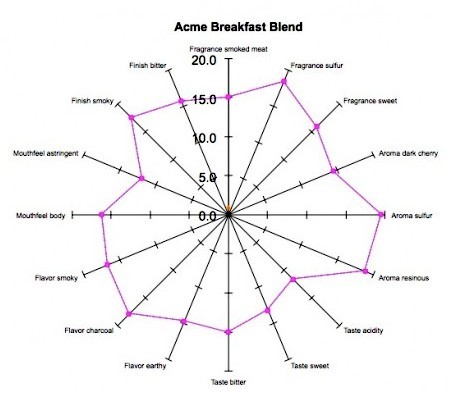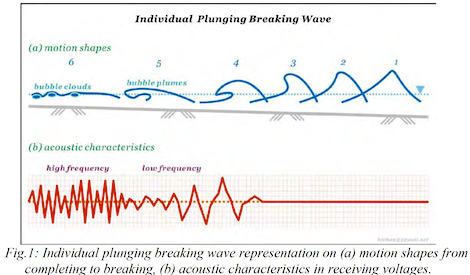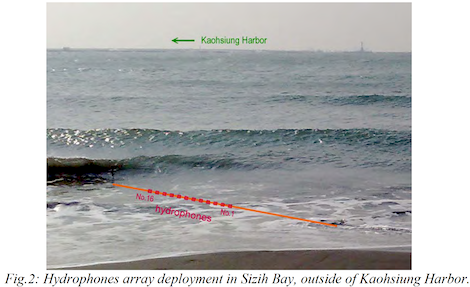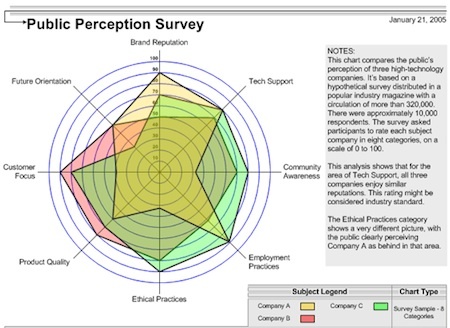Marc Abrahams's Blog, page 277
March 29, 2016
An industrial/art video about mechanical carrot peeling
Will you watch an industrial/art video about mechanical carrot peeling? Only you can answer that question.
Here is a video of that kind:

March 28, 2016
Professor Dreier’s Academic Drivel Report
Peter Dreier, who is the Dr. E.P. Clapp Distinguished Professor of Politics, and chair of the Urban and Environmental Policy Department, at Occidental College in Los Angeles, confesses his sins and exposes his academic hoax in a Feb 2016 article for The American Prospect Magazine entitled: Academic Drivel Report
“
Six years ago I submitted a paper for a panel, “On the Absence of Absences” that was to be part of an academic conference later that year—in August 2010. Then, and now, I had no idea what the phrase “absence of absences” meant. The description provided by the panel organizers, printed below, did not help. The summary, or abstract of the proposed paper—was pure gibberish, as you can see below. I tried, as best I could within the limits of my own vocabulary, to write something that had many big words but which made no sense whatsoever. I not only wanted to see if I could fool the panel organizers and get my paper accepted, I also wanted to pull the curtain on the absurd pretentions of some segments of academic life. To my astonishment, the two panel organizers—both American sociologists—accepted my proposal and invited me to join them at the annual international conference of the Society for Social Studies of Science to be held that year in Tokyo.”
Continue reading: Academic Drivel Report.
Coming soon: ‘The Presence of the Absence of Absences’.

Anti-productivity productivity: How to spay a cat fast
The veterinarian and blogger known as The Dog Zombie writes about a skilled colleague:
The key to high volume spay/neuter is, obviously, speed. She can spay a cat in seven minutes.

A mojo-istic top-10 list of Ig Nobel Prize winners
WatchMojo assembled a video list of “Top 10 Ig Nobel Prize winners”:
If you are, somehow, not familiar with the Ig Nobel Prizes, this list will give you a quick, happily random dip into the wonders.

March 27, 2016
An embarrassingly parallel invitation
In 2008, six people publicly issued an embarrassingly parallel invitation. They gave six pages of detail:
“Invitation to embarrassingly parallel computing,” Barbara J. Breen, Christine E. Weidert, John F. Lindner, Lisa May Walker, Kasey Kelly, and Evan Heidtmann, American Journal of Physics, vol. 76, no. 4 (2008): 347-352.
BONUS: Further detail on the general problem.

March 26, 2016
A graph for those who like coffee and spiders
Do you like coffee and spiders? If the immediate, unthinking answer to that question is “Yes”, then perhaps you will like this coffee spider graph. A coffee spider graph specialist (who goes by the pen name “Staff”) at a company called Coffee Analysts explains it on their web site:
Coffee Taste Spider Graphs Explained
By Staff | November 7th, 2011
…In essence, a spider graph displays a series of attributes on a predefined scale to create a visual representation of how a product tastes. The key to spider graphs is in blind testing by a trained panel. At Coffee Analysts, a team of professional cuppers (tasters) convene in a dedicated sensory laboratory devoid of external stimuli: no talking, no perfumes, no distractions. These cuppers independently analyze the coffee in terms of taste and aroma… Coffee Analysts can complete descriptive Analysis projects and chart the results in spider chart format.
 This kind of chart, also known as a radar chart, can be wonderfully confusing when used to display the behavior of several variables. Deployed skillfully in a PowerPoint presentation, they can be as effective as live spiders at frightening an audience. Microsoft says: “Spider charts are commonly used by consultants“. Microsoft offers this as an example of a consultant-grade spider chart:
This kind of chart, also known as a radar chart, can be wonderfully confusing when used to display the behavior of several variables. Deployed skillfully in a PowerPoint presentation, they can be as effective as live spiders at frightening an audience. Microsoft says: “Spider charts are commonly used by consultants“. Microsoft offers this as an example of a consultant-grade spider chart:
BONUS (unrelated): A spider identification chart

March 25, 2016
“Thinginess fails”
Brian Hayes wrote, in American Scientist, in 2002, about Lewis Fry Richardson‘s book Statistics of Deadly Quarrels:
An interesting lesson of Richardson’s exercise is just how difficult it can be to extract consistent and reliable quantitative information from the historical record. It seems easier to count inaccessible galaxies or invisible neutrinos than to count wars that swept through whole nations just a century ago. Of course some aspects of military history are always contentious; you can’t expect all historians to agree on who started a war, or who won it. But it turns out that even more basic facts—Who were the combatants? When did the fighting begin and end? How many died?—can be remarkably hard to pin down. Lots of wars merge and split, or have no clear beginning or end. As Richardson remarks, “Thinginess fails.”

Catastrophic Snow Globes – who’s shaking who?
At first glance, snow globes might seem trite or trivial objects, however :
“[…] on closer reflection, they are revealed to be symbolic realms that provide clues to the desires, dreams, nightmares, and memories of the cultures that produce them.”
– explains professor Lindsey Freeman, a sociologist who teaches, writes, and thinks about cities, memory, new technologies, art, and the atomic bomb at Buffalo State University of New York.  The professor’s paper on the subject of snow globes, (particularly those representing loss and malevolence) is published in the journal Space and Culture, January 12, 2016. Reminding us that :
The professor’s paper on the subject of snow globes, (particularly those representing loss and malevolence) is published in the journal Space and Culture, January 12, 2016. Reminding us that :
“Thinking critically about the hermetically sealed worlds of snow globes opens up riddles of modern life. It brings attention to our size, to ourselves, and to the worlds we inhabit and create. The art of catastrophe expressed in disaster snow globes points out our faults and our fears, but allows us to give them a shake. As we shake them, they shake us.”
See: Catastrophic Snow Globes as Oneiric and Mnemonic Gadgets
Important Security Advice: If you are thinking of buying a souvenir snow globe (malevolent or otherwise) and are also thinking of transporting it internationally by means of passenger air travel, you should consult your airline – e.g. here are Special Instructions from the US Transportation Security Administration.
Note: The picture shows a souvenir snow globe from the 1889 Exposition Universelle, marking the 100-year anniversary of the storming of [the] Bastille.
Glossary: ‘Oneiric’ (adj.) – of or relating to or suggestive of dreams.
Further explorations: A full copy of the paper, and other writings are available via the professor’s website (click ‘publications’)

March 24, 2016
High Sounds of the Sea, Over There
If you love the sounds of the sea, and you want to know where — precisely where in the sea — some of those sounds come from and go to, this study may be of interest:
“High frequency directionality measurement of ambient noises from breaking waves in the surf zone,” Hsiang-Chih Chan, Chi-Fang Chen, Ruey-Chang Wei, Proc. of the Underwater Acoustic Measurements: Technologies and Results, 3nd Inter. Conf. and Exhi. 2009. The authors, from National Taiwan University and National Sun Yat-sen University, report:
“The ambient noises in the surf are mainly generated by breaking waves, which’s mechanism is well-known bubbles resonance while surface waves break…. [Hundreds of papers] have studied this topic from World War II. The surf noise sources are generally made by wave motions shown in Fig. 1, which represents the individual plunging breaking wave in this study…. In [our] surf experiment, it may be difficult to obtain the resonance from an individual bubble, but the acoustic characteristics, such as noise level fluctuations and spatial distribution of noise energy, can be received by using a hydrophone array for more interesting studies. Thus the main study subject in this paper is to measure the noise directionality by a line array and analyze the noises’ spatial distribution by using the beamforming calculation.”



Subway Benches (postphenomenological viewpoints)
Subway benches, mundane though they might seem, can sometimes become ‘multistable’ – thereby attracting the attention of Robert Rosenberger (who is an assistant professor in the School of Public Policy at the Georgia Institute of Technology). The professor, a specialist in postphenomenology, has recently examined the multistability and agency of mundane artifacts (from speed bumps to subway benches) in a paper for the journal Human Studies (“a quarterly journal dedicated primarily to advancing the dialogue between philosophy and the human sciences.”)
Here is a short extract from the section in the paper entitled: ‘Cross-Examining the Public Bench’
“For a person accustomed to sitting on a particular bench in an everyday sense (say, waiting for the bus each morning), habits of conception and bodily approach develop. The details of the relationship an accustomed user shares with the typical (i.e., non-sleep-prevention) bench in its dominant stability can be drawn out by contrasting that stability with the bench-as-bed alternative. That is, for one that sits on a bench each day, the details of her or his ‘‘sitting’’ relationship with that bench can be drawn out by comparing it with what it would be like if this person were to instead lay across that same bench. These details include the particular manner in which one comports one’s body with respect to use in terms of the dominant stability, just how deeply transparent this relationship is, and just how stubbornly sedimented these aspects of one’s approach may be. If that same user were asked to consider lying down across the bench, she or he may not engage this alternative stability nearly as automatically or transparently, nor would the same aspects of the bodily interaction with the device become transparent were she or he to eventually become accustomed to this alternative usage.”
See: Multistability and the Agency of Mundane Artifacts: from Speed Bumps to Subway Benches
Also see: Discovery: The park bench

Marc Abrahams's Blog
- Marc Abrahams's profile
- 14 followers




